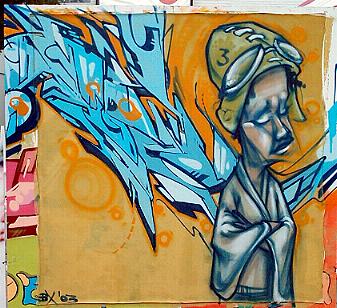It is already Easter, people have been fooled, and essays have been written. I would like to discuss my final project for this class in particular. I decided to create a YouTube video that examines the difference between mainstream and alternative media. The link is here http://www.youtube.com/watch?v=m9vEKPfTVg4 . I wanted to raise the point that in our democratic society it is the job of citizens to become active consumers and critical of the information presented to us. The interactive nature of the internet affords us this capability. The internet, especially the proliferation of blogs and alternative news sites, allows a multiple of different viewpoints to enter the public domain. Therefore citizens are able to formulate their own unique opinions and challenge mainstream ideology, because when it comes down to it, in order for our democratic society to function properly citizens must be informed and have their own unique opinions.
I ran into a couple of problems while creating this video. The first problem was the fact that the program which allows YouTube videos to be converted into an editable format did not work on my computer. This meant that I had to film YouTube videos with my webcam in order to place them in my video. This is the first breach of copyright I am aware of and I am sure there are many more. The second problem and the most noticeable was that when I posted my video to YouTube the audio did not work due to copyright infringement. So apparently I chose a song that is protected under copyright law and therefore has been taken off YouTube. The sketchy video quality and the lack of sound, I feel, have taken away from some of the effectiveness of the video.
While this has been rather disappointing in regards to my final project it has opened my eyes to the strict copyright laws of our society. While there have been significant steps forward with regards to the formation of creative commons, intellectual property is still highly regarded as that, property. These strict copyright laws, which define ideas as property, run counter to how a society should function. Historically societies have advanced by building off and expanding from previous ideas. The internet allows this sharing of information and ideas now more than ever, we must embrace this new technology and use it to our advantage. I have tried to do this without much success. I feel that this is due to the time constraints, and my lack of technical knowledge. This was the first YouTube video I tried to create, and I plan to make more in the future and learn from my previous mistakes with this video.
The creation of this video and my active role in the blogosphere has opened my eyes to the participatory nature of the internet. After actively participating within alternative media I don’t feel that I could go back to my old lifestyle of consuming simply mainstream media. The blogosphere has opened my eyes to a whole new world of interactive media, I do not plan on becoming a passive consumer of media I have embraced my status as an active participant within the media and look forward to carrying on this trend. It has been great blogging in this community and I look forward to meeting all of you in the blogosphere at some point in the future.
Until next time keep Expanding Societies Regulations
- The Ubiquitous Civilian
